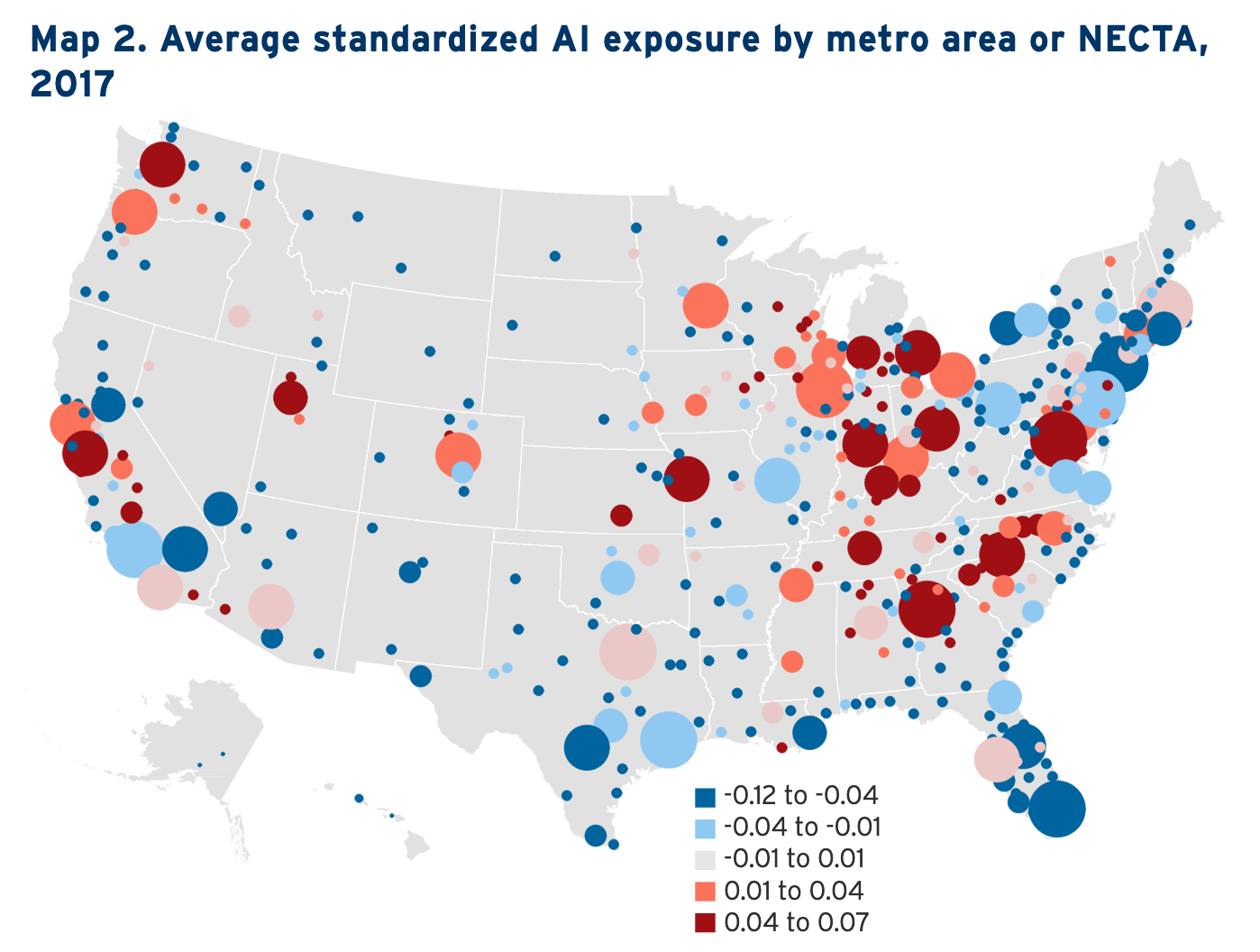Artificial Intelligence Could Have Biggest Impact on White-Collar Jobs

Aleutie/Shutterstock.com
New research suggests that white collar jobs are more likely to feel the impacts of artificial intelligence in the workplace than blue-collar positions.
The fear used to be that robots would entirely replace manufacturing and production jobs.
But new research shows that developments in artificial intelligence could also have drastic effects on the white-collar workforce, particularly in cities and states with a high number of technology-related jobs.
The new report from the Brookings Institution examines the jobs that are most likely to change or—in the worst case scenario—be eliminated because of the evolution of artificial intelligence in the workplace. Researchers believe that many well-paying, white-collar professions, ranging from market research analysts and sales managers to programmers and engineers, will see encroachment by artificial intelligence in their fields.
“Often analytic or supervisory, these roles appear heavily involved in pattern-oriented or predictive work, and may therefore be especially susceptible to the data-driven inroads of AI,” the report states.
To analyze the potential impact of artificial intelligence in the economy, researchers compared language included in artificial intelligence-related patents with job descriptions to determine which type of jobs are most likely to encounter artificial intelligence.
The researchers found that “workers with graduate or professional degrees will be almost four times as exposed to AI as workers with just a high school degree.” By contrast, low-paying jobs that require hands-on services, such as health care or food preparation, are unlikely to be as vulnerable to artificial intelligence.
Jacob Whiton, a research analyst with the Metropolitan Policy Program at Brookings, stressed that the research does not provide a definitive guide of the type of jobs that will be replaced by artificial intelligence, rather the research informs the industries in which AI has the potential to be used in the future.
“This is an indication of the direction towards which a technology could be used and is not meant to imply anything about how in particular it is going to change a given job,” Whiton said.
One key insight in the report is that the effects of artificial intelligence on the workforce will not be felt evenly across the country.
Cities identified as being at the highest risk of exposure to workforce disruption include those with large technology industries like San Jose, California; Seattle, Washington; Boulder, Colorado; and Salt Lake City and Ogden, Utah. Other cities that are highly reliant on the agriculture and manufacturing industries—including Bakersfield, California; Greenville, South Carolina; Detroit, Michigan; Columbus, Ohio; and Louisville, Kentucky—were also identified as having a high risk for disruption.
Smaller, rural communities “are significantly less exposed to technological disruption than larger, dense urban ones,” the report states.

When it comes to the impact on manufacturing industries, states in the Midwest and south—including Wisconsin, Michigan, Indiana, Kentucky, Alabama and Georgia—are likely to see higher levels of exposure to artificial intelligence, specifically in the textile and auto manufacturing sectors, where machine learning is making significant advancements, according to the report.
The findings may provide new insight for state and local government officials looking to develop or improve workforce development programs, Whiton said.
“So much of the discourse has been equipping workers with tech skills,” he said.
The new analysis on the impact that artificial intelligence can have on white-collar jobs may prompt some officials to reexamine the type of durable skills that office workers need to be competitive in the modern workplace, he said.


